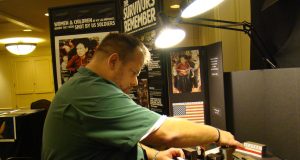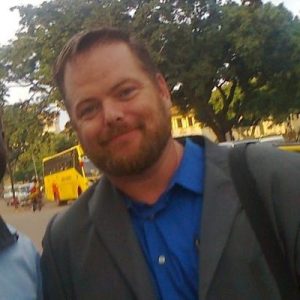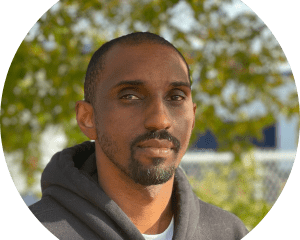 NEVER AGAIN
NEVER AGAIN
FIFTY YEARS ON, VETERANS FOR PEACE MEMORIALIZES THE VICTIMS OF THE MY LAI MASSACRE, SEE KING TO BUILD PEACE AND SOCIAL JUSTICE BY SHINING A SPOTLIGHT ON THE HORRORS OF WAR
KING TO BUILD PEACE AND SOCIAL JUSTICE BY SHINING A SPOTLIGHT ON THE HORRORS OF WAR
Joshua Shurley
In the early morning hours of March 14, 1968, the soldiers of Charlie Company (1st Battalion, 20th Infantry) marched into a small hamlet known as My Lai (pronounced ‘mee-lie’) in rural South Vietnam. Frustrated by the loss of several of their fellow soldiers to an elusive enemy suspected to have received material support from the local civilian population, they spent the morning rounding up as many as five hundred unarmed Vietnamese civilians, mostly women, elderly men, and children (including infants), and executed them, leaving their bodies in open ditches. Several rapes and mutilations were also reported, as well as the burning of the huts and destruction of livestock and food stores.
At a briefing before the mission, officers of the unit had issued orders to “kill anything that moves.” Some soldiers gleefully complied, some reluctantly did so, and others refused to take part in the violence altogether. The official after-action report listed that day as a “successful operation” for which Charlie Company was congratulated on the “outstanding action.”
There were a handful of Vietnamese survivors that day, thanks to the intervening by a helicopter crew commanded by a young pilot named Hugh Thompson who saw US soldiers killing unarmed civilians and was so horrified he landed in the midst of the killing and confronted officers on the ground to halt immediately, even ordering his crew to fire on the Americans if they did not cease the cold-blooded executions. For his trouble, Thompson was condemned and ostracized by many individuals in the military, as well as the public, for his role in the investigations and trials concerning the massacre. He would not be recognized for his actions at My Lai for another three decades.
A cover-up ensued, and the details were meant to be buried in secret army files and never brought to light. Only one junior officer was ever convicted on a murder charge and his sentence was cut short by the Nixon administration after several months in jail and a few years on house arrest. It was a combination of intrepid journalism, brave whistle-blowing and blind luck that the story of what happened that morning ever reached the public.
What on Earth prompted these young Americans to carry out such a ghastly massacre? These were by and large average kids drafted into the army from a wide spectrum of America in the late 1960s. The men themselves reported they were just following orders–a rationale that contradicts the standards set at Nuremberg and Tokyo after World War Two, where following orders was not a defense for committing war crimes. The officers who planned and oversaw the operation were absolved of responsibility for what occurred.
Why is this important? Why not look away from such a horrible and ugly story? What good comes from reading these ghastly details and acknowledging what was perpetrated that spring morning in 1968? As the late author James Baldwin said, “not everything that is faced can be changed. But nothing can be changed until it is faced.”
The importance of confronting, processing and reconciling the memories of man-made atrocities such as My Lai cannot be overstated. There is Santayana’s lesson that “Those who cannot remember the past are condemned to repeat it.” But even more important is how we remember our past. The ways in which people choose to memorialize atrocity and hardship say a lot about post-conflict justice and the collective psyche of a society.
On Saturday, March 24, 2018, Veterans For Peace and Peace Fresno will host a special memorial exhibit to memorialize the victims of My Lai. The idea is to remember, to learn, and to engage in dialogue about the difficult subject of war, in order to spark or renew our commitment to peace and social justice.
The Fresno Center For Nonviolence is proud to support this project, headed by artist Mac McDevitt of Veterans For Peace – Chapter 26 (Chicago). Veterans For Peace is a group of military veterans and allies across the United States and in several countries whose purpose is to educate the public about the true costs of war, to seek justice for veterans and victims of war, and to abolish war as an instrument of national policy. For more information about the one-day My Lai Memorial Exhibit on Saturday, March 24th, contact either of the following local organizers:
Camille Russell with Peace Fresno at (559) 276-2795
Joshua Shurley with Veterans For Peace at (559) 512-9469
Joshua Shurley, PhD is an army veteran turned conflict researcher who currently teaches at Clovis Community College. He serves on the board of the Fresno Center For Nonviolence and is an organizer with Chapter 180 (Fresno) of Veterans For Peace.


